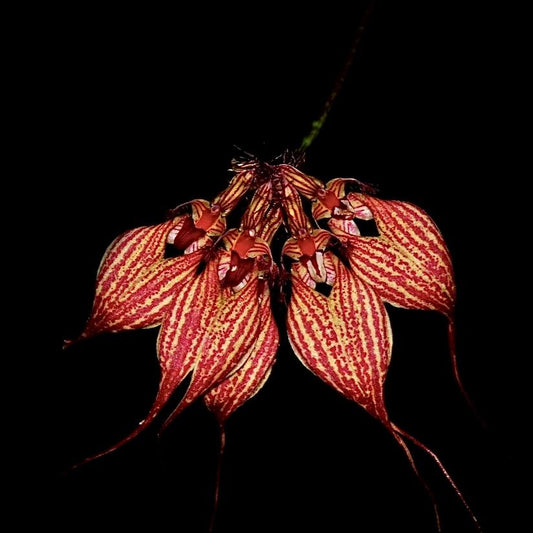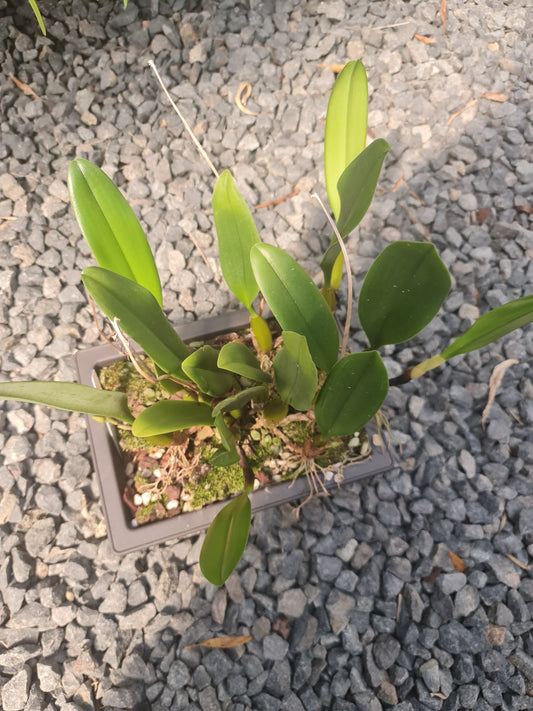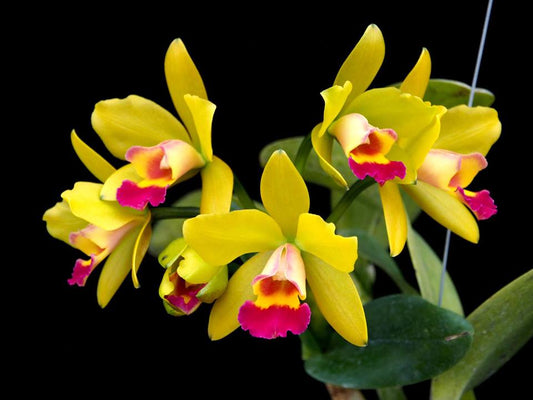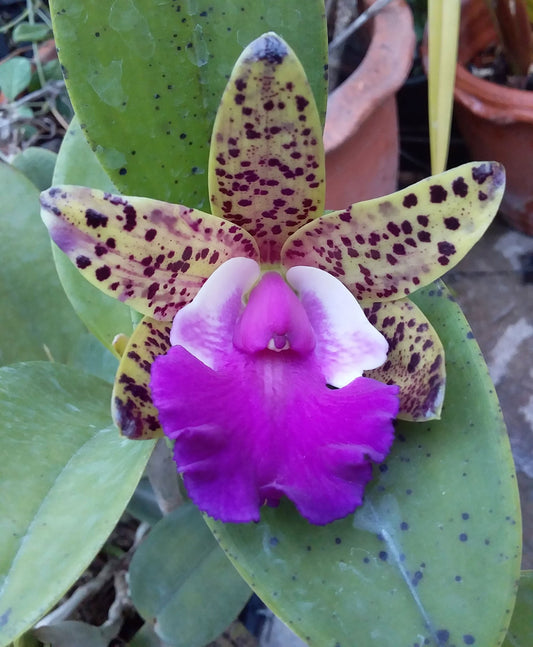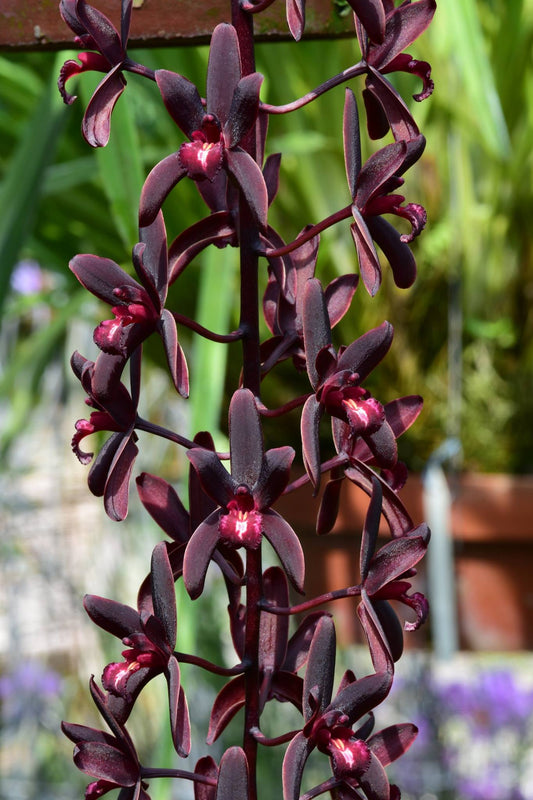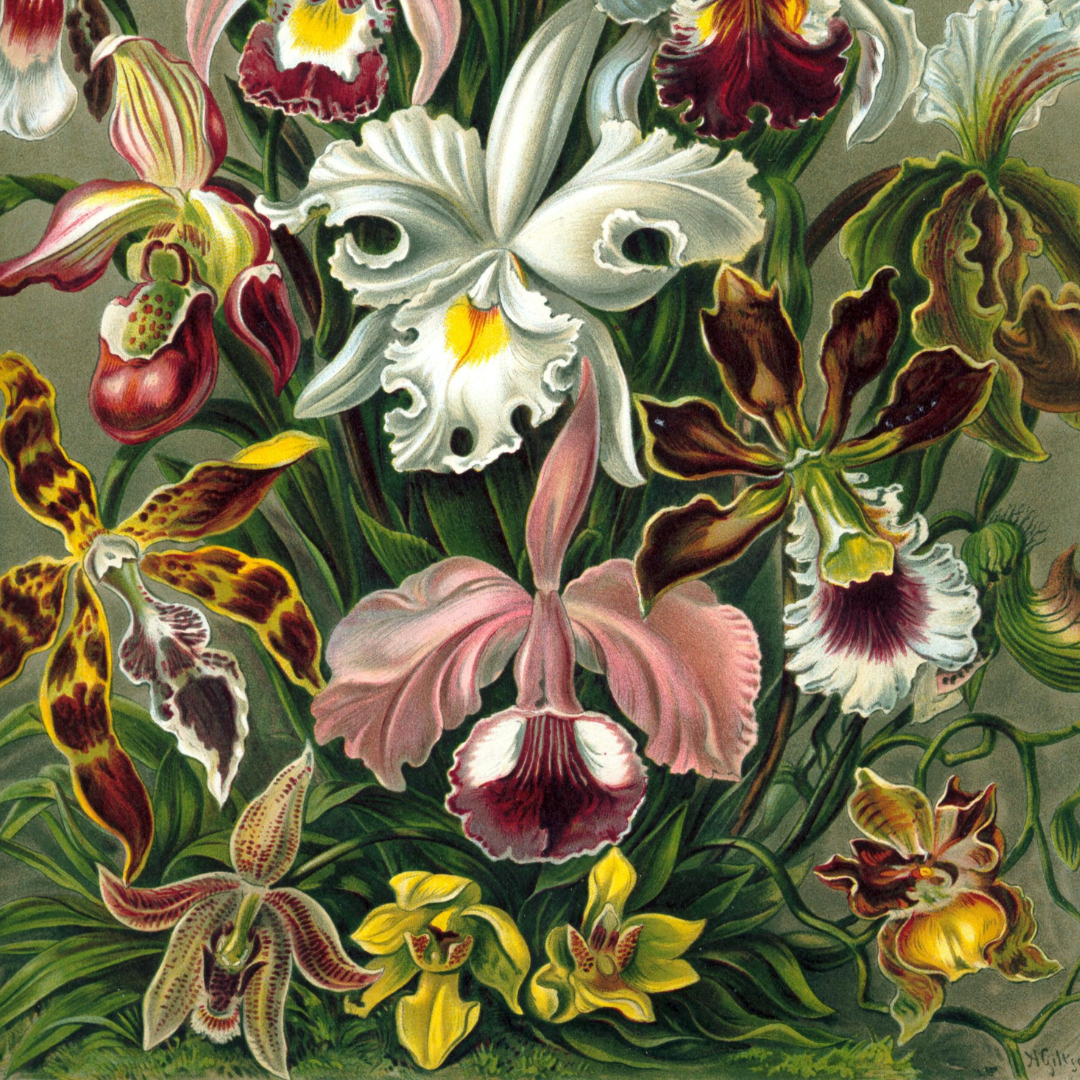Bulbophyllum Care Guide
06 Apr 2021
Light:
Bulbophyllum orchid need intermediate light about 15000-20000 lux which is less than Cattleyas but more than Phalaenopsis. Higher light, that does not damage the leaves, seems to result in better and more frequent blooming. They can be grown indoors providing they receive good light.
Temperature:
They are regarded as warm to intermediate growers. Most require warm temperatures from 21-27°C but will be comfortable in a temperature range of 7 to 35°C. They will not tolerate frosts. They need a temperature drop of about 6-8°C at night for flowering. Those that originate in high altitude areas of Papua New Guinea prefer lower temperatures and may not be suited to hotter climates. The minimum temperature for the tropical forms is considered to be 10°C and 15°C for equatorial species.
Humidity:
The plants from Bulbophyllum genus prefer high levels of humidity (about 70%) and very good air circulation year round. Good air movement is important to reduce the problem of leaf fungal disease due to frequent watering.
Substrate, growing media and repotting:
Bulbophyllum orchid can be grown mounted on slabs of cork or tree fern. However, all the species can be grown in shallow pots, or even baskets. One requirement is to retain enough moisture at the root, as most species don’t like to dry out. The rhizome can be trained to stay in the pot by bending them, eventually cutting the old bulbs and leaving them in place, so they will provide additional growth in the pot. Sphagnum has been popular because it retains a lot of moisture, which is what these plants prefer when in active growth; however when it decays or starts to retain too many salts, the plants will have problems. A mixture of small bark and perlite is also suitable. Repot as infrequently as possible. Repotting is best done in spring or autumn when new growth appears at a frequency of about every 3 years.
Watering:
These orchids need to have ample water supply when the plants are in active growth, and a drought of even a couple of days is enough to kill the new growths and set back the plant. Due to their shallow fine root system they need to have constant moisture around their roots, however depending on their origin, some need a distinct wet and dry period to flower. The potting mix should never be allowed to dry out completely. They can be kept slightly drier in winter.
Fertilizer:
A balanced weak liquid fertilizer about once per month to weekly is recommended. They also enjoy fish emulsion and other organic fertilizers. Try our Organic Fertiliser!

